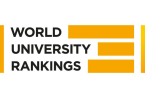Pursuing a master’s degree in the United States can be a rewarding and transformative experience, opening doors to new opportunities, advancing your career, and expanding your knowledge in your field of study. However, the application process can seem daunting, especially for international students. In this comprehensive guide, we’ll walk you through the steps to successfully apply for a master’s degree program in the US, from researching programs to submitting your application.
1. Research Programs and Universities
The first step in applying for a master’s degree in the US is to research programs and universities that offer your desired field of study. Consider factors such as program reputation, faculty expertise, curriculum structure, location, cost, and available resources. Use online resources, university websites, rankings, and testimonials from current and former students to gather information and narrow down your choices.
2. Review Admission Requirements
Once you’ve identified potential programs and universities, review the admission requirements for each program carefully. Common requirements may include a bachelor’s degree from an accredited institution, minimum GPA requirements, standardized test scores (such as the GRE or GMAT), letters of recommendation, a statement of purpose or personal statement, and proof of English proficiency (such as the TOEFL or IELTS for international students).




